Editor’s guide: The difference between the C-side and B-side products determines the different responsibilities of the product manager in the life cycle. From the perspective of design thinking, the author of this article will talk to us about the differences between B-side and C-side product managers.
Editor’s guide: The difference between the C-side and B-side products determines the different responsibilities of the product manager in the life cycle. From the perspective of design thinking, the author of this article will talk to us about the differences between B-side and C-side product managers.

In the post-epidemic era, demand for B-end products such as online office and online and offline integration has erupted, and the recruitment of B-end product managers has also grown rapidly.
I have been engaged in the design and operation of B-side and C-side products in the communications industry for many years. Recently, I switched to responsible for large-scale B-side products. The first two days of the project had to recruit a new product. I was quite impressed by one of the applicants with 5 years of work experience. , The other party said, “There is not much difference between the B-end and the C-end, no matter which industry is the B-end or the C-end,” he took this opportunity to analyze the difference between the B-end and C-end products.
What is a B-end product? There can be many types of product classification, which are defined by different user groups. Products can be divided into B-end products and C-end products. Typical B-end products include CRM, ERP, OA, Zhongtai, etc.; C-end products are WeChat, Douyin, Jingdong Taobao, etc.
This article will focus on the five points of user-oriented, design starting point, design focus, MVP thinking, and target value, and analyze the difference between the design thinking of B-end and C-end product managers.
- Different for users
B-side customers are enterprise-level users, and the user group is stable and unified.
The customers of the B-end products are employees in the enterprise, and such users have common characteristics at the enterprise level to form a collective personality. The user needs of B-end products are enterprise-level, and personalized needs are usually ignored. However, users of B-end products may usually have multiple roles.
Taking the data center as an example, users may include business personnel, data mining experts, operation and maintenance personnel, managers, etc., usually multiple people, multiple posts, multiple posts, multiple posts per post, and multiple people in one post. Demands in different scenarios.
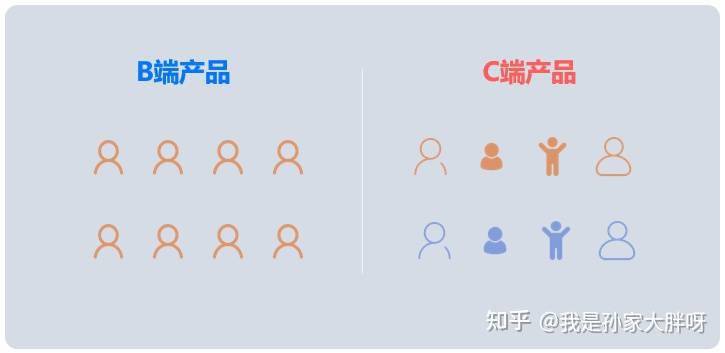
The users of C-end products are individual and diversified.
Of course, the C-end product manager can form user portraits by analyzing the user’s behavior characteristics, and classify users into groups. These characteristics may include user age, gender, location, hobbies, etc. But each user is personalized, and each user can put forward requirements and product iteration opinions, but the product manager needs to conduct unified screening based on the current product positioning and development stage to remove the false and keep the truth.
Two, the target value is different
The B-end products focus on corporate office and improve production management efficiency.
The starting point of demand for B-end products is to improve the internal management or production efficiency of the enterprise, and the theme around it is the production practice of the enterprise. It is often seen how much efficiency can be improved, what processes have been optimized, and how much costs have been reduced after the product is launched. However, it is relatively complicated to measure the value of B-end products. Because there are many influencing factors in actual production, it is difficult to measure directly through data.
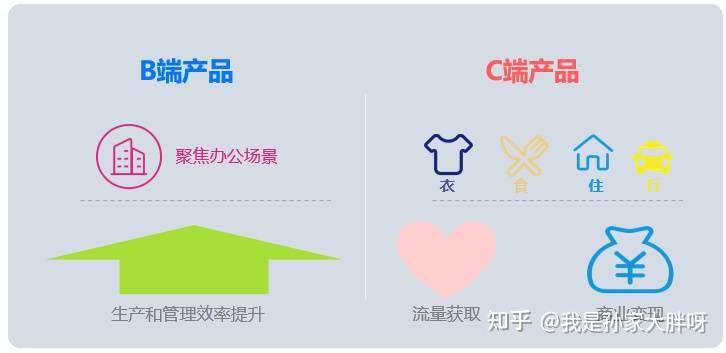
C-end products take care of food, clothing, housing and transportation, eating, drinking and having fun, and shoulder the important task of traffic acquisition and commercial realization.
The function of the product concerned is whether it can meet the needs of users and whether it can solve the pain points encountered at present. For example, are you hungry? Meituan is to solve the problem of users who don’t have time to eat, but want to eat better (so the crossover defeats the instant noodles), WeChat solves the user’s instant messaging problem for free (therefore directly The short message service of the operator).
Three, the design starting point is different
If the product design from 0 to 1 is divided into three stages: demand analysis, product design, and product landing, by analyzing and comparing the key tasks of each stage, it is obvious that the product design of the C-end and the B-end is different, and the product manager design of the B-end The starting point is business status diagnosis (requirements survey).
As mentioned in the previous article, the B-end product is for the employees of the enterprise, and its purpose is to improve the management and production efficiency of the existing enterprise. Therefore, it is first necessary to understand the business content and development strategy and tactics of the enterprise through business research; secondly, it is necessary to diagnose the enterprise For the current model problems, process problems or management problems that exist in the current development, the corresponding solutions are finally proposed.
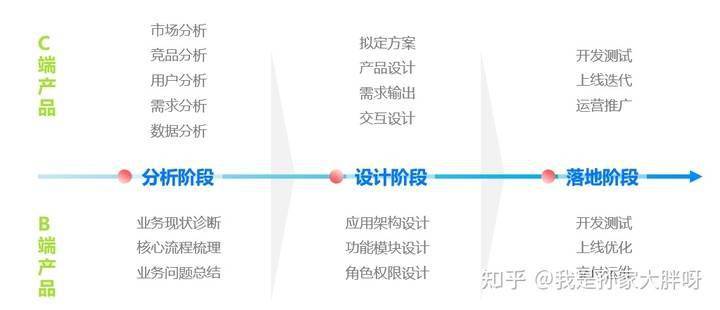
The starting point of C-end product design is market research. Common C-end product design thinking usually starts from market research and competitive product analysis. This is also determined by the C-end product’s goal of “maximizing the pursuit of commercial value.”
Through market analysis, we can get a business canvas and understand the market space and future prospects to determine whether it is necessary to make the product. Simply put, whether it can make money. Through the analysis of competitive products, we can understand the situation and core capabilities of competitors, so that we can make better products, so as to realize that everyone has no one, everyone has one, and everyone has one. Simply put, it is to learn the advantages of the opponent, and to use their own strengths to build barriers to competition.
Four, the design focus is different
The focus of B-end product design is abstract modeling and business processes.
The business complexity behind the B-end products is high. People, division of labor, collaboration, processes, and rules may be adjusted at any time. Product managers need to conduct in-depth analysis of the business, abstract the seemingly disorganized business, and abstract the commonality from the business process and business appearance. Summarize and abstract the core business essence.
There are many abstract modeling methods for business processes, such as: ER, UML, etc., through business modeling work is the basis of B-end product design, excellent business modeling will help better carry out product role and process design, Authority and management design, interface and report design.
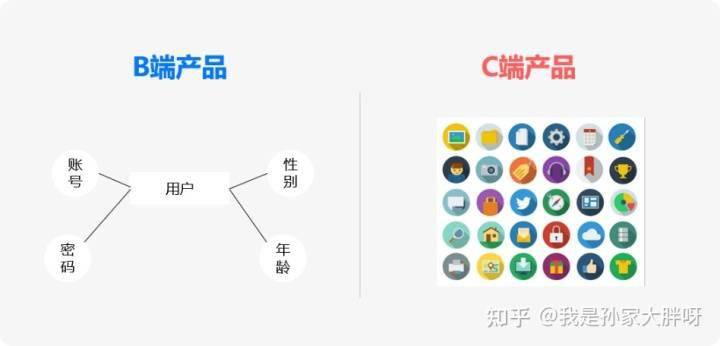
C-end product design emphasizes interactive experience. The number of users of C-end products is usually 10,000 or even 100 million, which is much higher than that of B-end products. In addition, C-end users require very low learning costs and operating costs. A bit of uncomfortable experience may cause users to abandon the product, and user experience will directly determine user retention.
Therefore, the position, color and size of each button of the C-end product, the design and color of each picture, the number of words in each sentence, and the language must be fully thought, demonstrated, and tested to provide the ultimate interactive experience.
Five, MVP thinking is different
The B-side MVP is the smallest closed loop that supports a certain business scenario.
The MVP of the B-side product is usually not an MVP. Why do you say that? It is because the B-side product is designed to solve corporate problems. Such problems cannot usually be solved independently by one or two product function points, and a complete product closed loop is required. Delivery, which also requires the B-side product manager to conduct systematic thinking in the design phase.
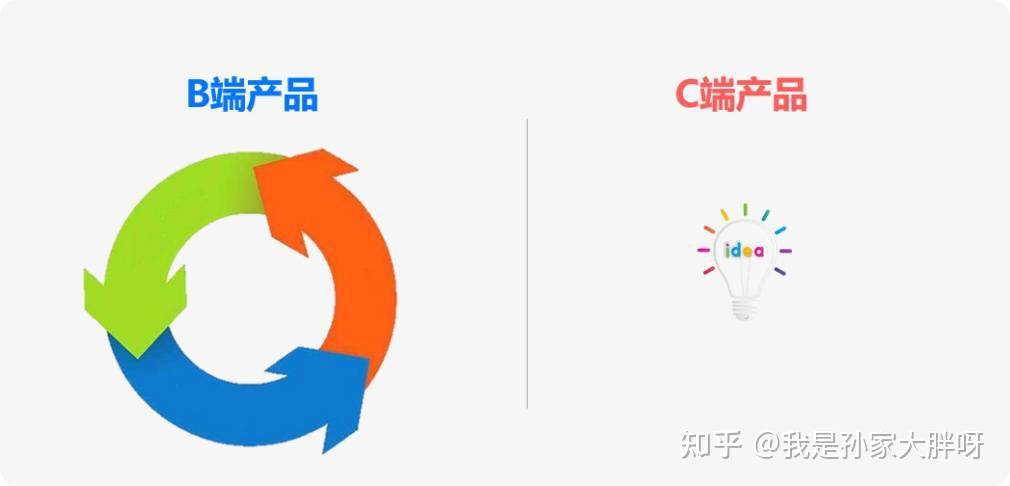
C-side mvp can grasp a certain core pain point of the user. C-end products are more based on the business profit model. An MVP version is a preliminary verification of a product Idea. For example, many early MVPs of e-commerce websites were in the form of merchants posting posts on BSS forums and users following posts.
However, even now, there is still no shortage of e-commerce platforms that use the WeChat ecological solitaire to sell products at the lowest development cost.
references:
- http://www.woshipm.com/pd/929269.html
- http://www.woshipm.com/pd/4385432.html
- http://www.woshipm.com/pd/2570312.html
- http://www.woshipm.com/it/1058389.html
- http://www.woshipm.com/pmd/3607901.html
The title picture comes from Unsplash, based on the CC0 protocol

























































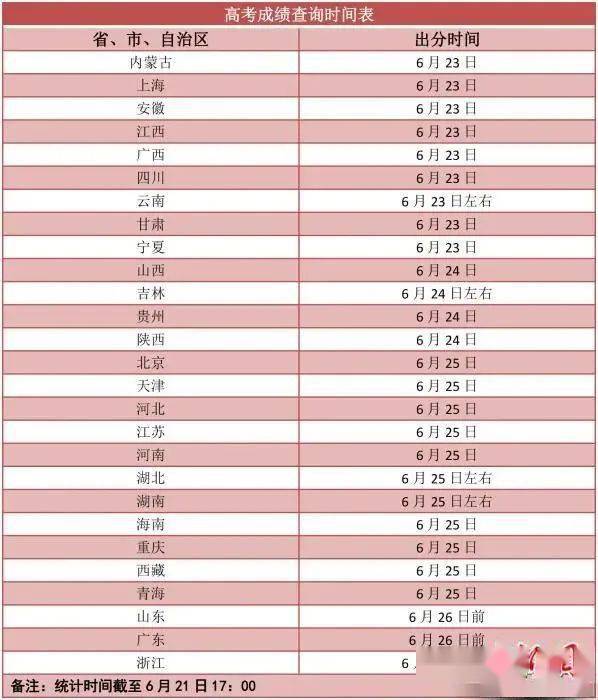



You must log in to post a comment.